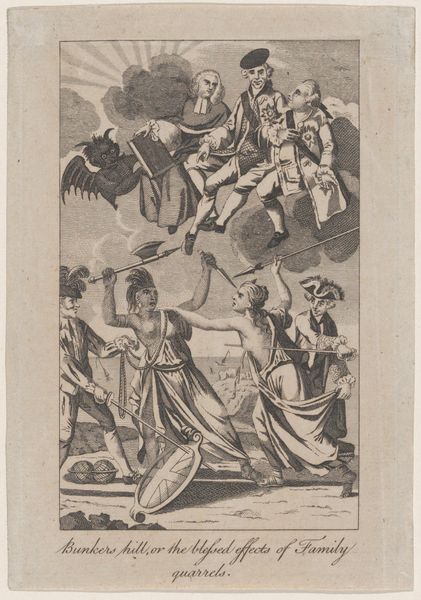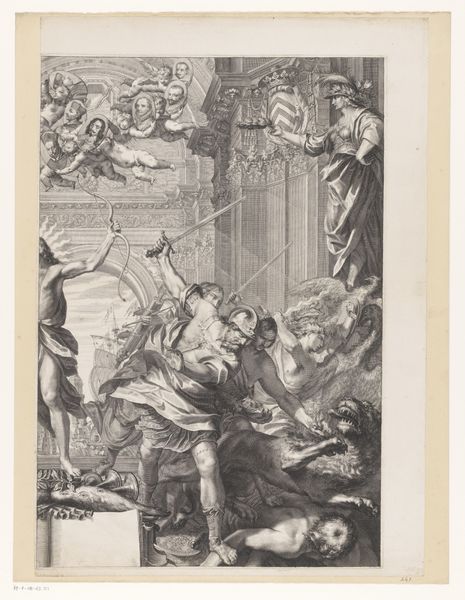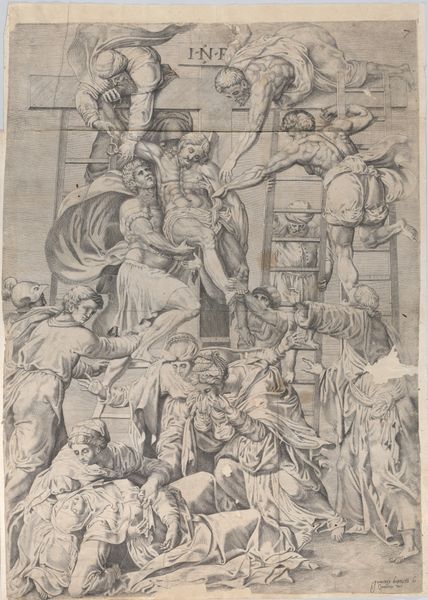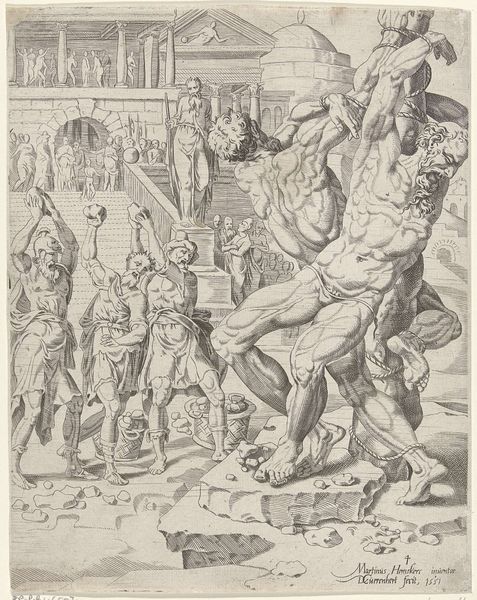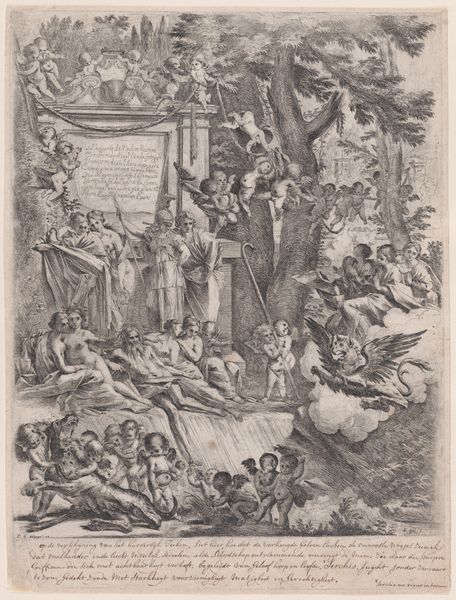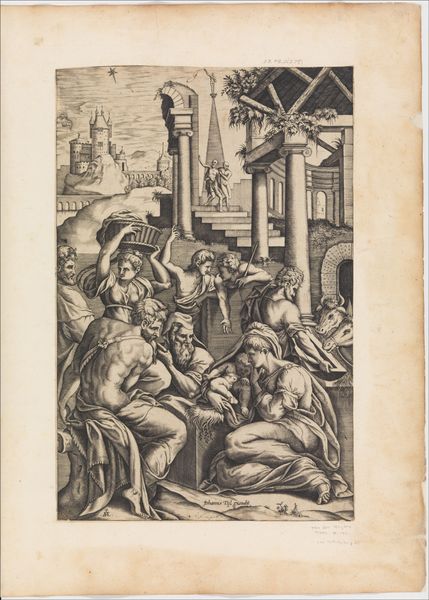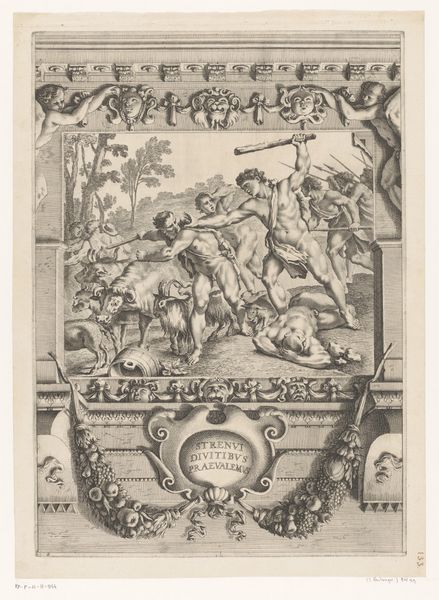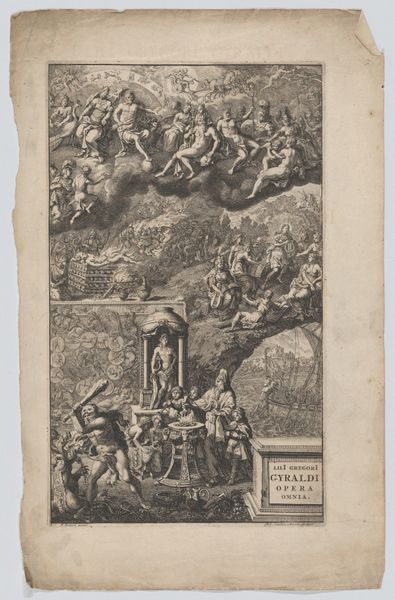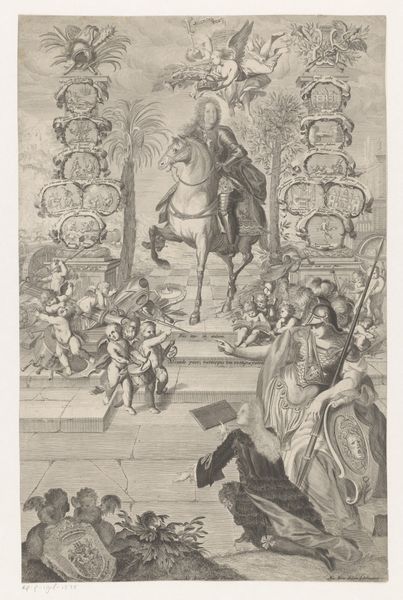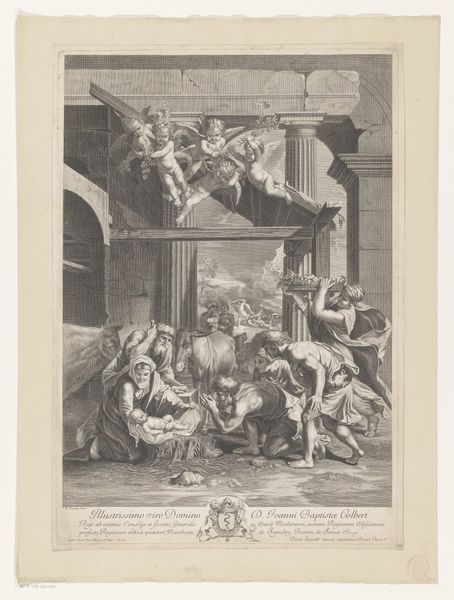
Aeneas and Mercury (from "The Works of Virgil: Containing his Pastorals, Georgics and Aeneis," 1697) 1654
0:00
0:00
drawing, print, etching, engraving
#
drawing
#
narrative-art
#
baroque
# print
#
etching
#
figuration
#
history-painting
#
engraving
Dimensions: Plate: 10 1/4 × 7 11/16 in. (26 × 19.5 cm) Sheet: 13 7/8 × 7 7/8 in. (35.2 × 20 cm)
Copyright: Public Domain
This etching, "Aeneas and Mercury," was created in 1697 by Wenceslaus Hollar. The composition is immediately striking, filled with intricate lines and a dynamic arrangement of figures against a backdrop of classical architecture. Hollar masterfully uses line to create depth and texture, guiding our eyes through the unfolding drama. Mercury hovers in the air, holding his symbolic caduceus, while Aeneas stands below, observing the unfolding scene. The architectural elements—columns, arches, and scaffolding—intersect, constructing a complex visual space which adds to the overall sense of movement. The scene's semiotic structure reveals a tension between divine intervention and human endeavor. The etching technique itself, with its fine, detailed lines, reflects a larger cultural discourse on representation and the power of images. This detail emphasizes not just the aesthetic quality but also highlights the dialogue between classical mythology and the artistic practices of Hollar's time, demonstrating how art can be a site of ongoing interpretation.
Comments
No comments
Be the first to comment and join the conversation on the ultimate creative platform.
